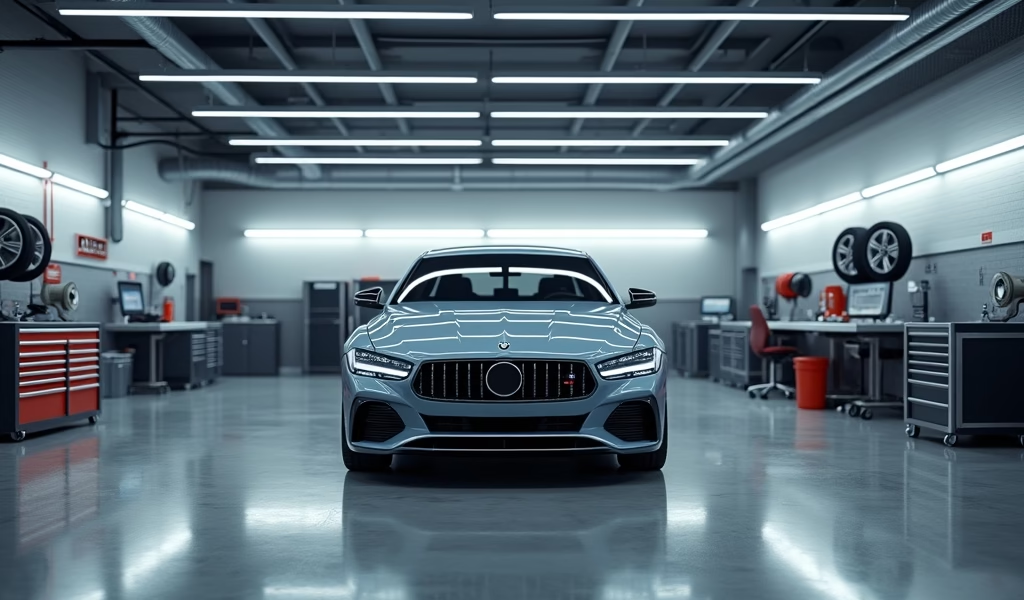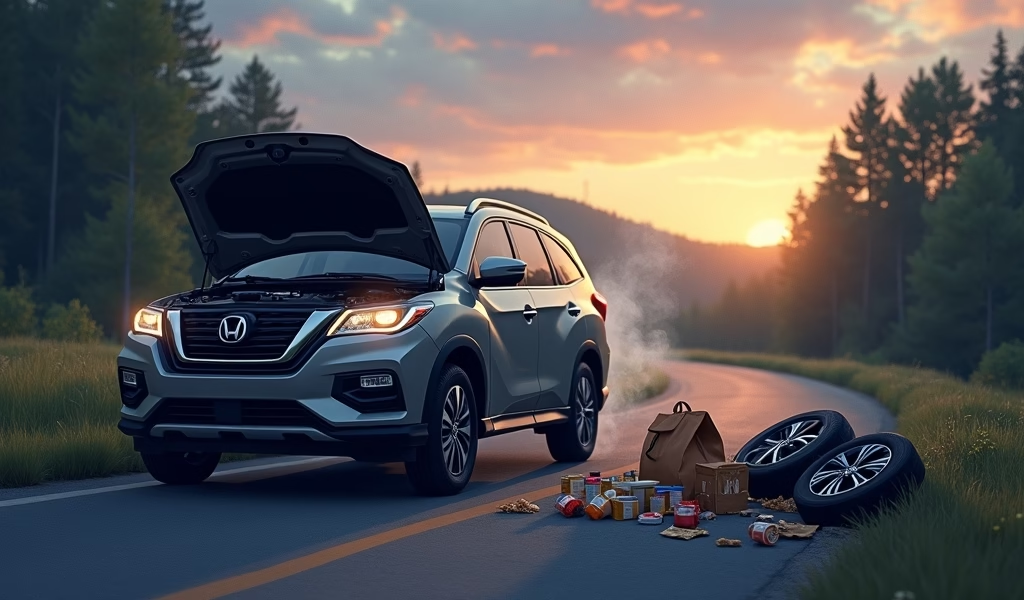Overview
This article provides five essential maintenance tips for family vehicles in 2024, covering fluid checks, tire care, climate control systems, interior protection strategies, and creating an effective maintenance schedule. Written by an experienced mechanic, it also reviews top family cars like the Honda Odyssey and Kia Telluride while emphasizing how proper maintenance prevents costly repairs and ensures family safety during daily use and road trips.
Table of Contents
- Introduction: Family Cars in 2024
- Top Family Cars for 2024: Balancing Needs and Wants
- Essential Maintenance Tip #1: Regular Fluid Checks
- Essential Maintenance Tip #2: Tire Care Beyond the Basics
- Essential Maintenance Tip #3: Climate Control Systems
- Essential Maintenance Tip #4: Interior Care Strategies
- Essential Maintenance Tip #5: Creating a Smart Maintenance Schedule
- Conclusion: Investing in Your Family’s Journey
- Frequently Asked Questions
Introduction: Family Cars in 2024
After 22 years working as a master mechanic, I’ve seen how family vehicles take a special kind of beating. They’re not just transportation—they’re mobile command centers where life happens. From breakfast spills to soccer cleats, science projects to vacation luggage, your family car handles it all while hopefully keeping everyone safe and comfortable.
In 2024, family vehicles have evolved dramatically. They’re technological marvels with safety systems that would’ve seemed like science fiction when I started in this business. But one thing hasn’t changed—they still need proper care to keep your precious cargo safe and your wallet happy.
The best family car options now range from tech-packed minivans to three-row crossovers with surprising fuel economy. Whatever your choice, these five maintenance strategies will save you thousands over your ownership journey while providing something even more valuable—peace of mind.
Top Family Cars for 2024: Balancing Needs and Wants
Let’s talk about what makes a great family vehicle in 2024. It’s not just about how many cup holders anymore (though that still matters). Today’s family-friendly vehicles balance practicality with features that make life easier.
The Honda Odyssey continues to impress with its clever storage solutions and “Magic Slide” second-row seats that make accessing the third row remarkably easy—something I appreciate when helping grandparents get situated for family outings. The built-in HondaVac remains a brilliant feature that tackles inevitable messes before they become permanent interior features.
For SUV lovers, the Kia Telluride offers exceptional value with near-luxury appointments at mainstream prices. What I particularly appreciate is the rear-occupant alert system—it’s saved more than one of my customers from leaving sleeping children in the car. The second-row captain’s chairs also create a perfect pathway to the third row, reducing sibling border disputes.
The Toyota Sienna Hybrid deserves special mention for achieving 36 mpg combined—a figure that seemed impossible for family haulers just a few years ago. After working on dozens of these, I can tell you the hybrid system is remarkably robust and well-engineered for longevity.
For families needing all-weather capability, the Subaru Ascent provides confident handling in poor conditions. Its standard all-wheel drive and X-MODE traction system have genuinely impressive capabilities that I’ve seen firsthand in Colorado winters.
According to IIHS safety ratings, all these vehicles score well in crash tests, but the Subaru and Kia models earn Top Safety Pick+ designations—the highest possible rating.

Essential Maintenance Tip #1: Regular Fluid Checks
I can’t stress this enough: fluids are the lifeblood of your family vehicle, and they need attention beyond just the oil change reminder. This is especially true for vehicles that face the unique strain of school drop-offs, soccer practice shuttling, and vacation road trips.
Oil changes remain fundamental, but the interval depends on your specific vehicle and driving conditions. Most modern family vehicles with synthetic oil can go 7,500-10,000 miles between changes under ideal conditions. However, what manufacturers don’t emphasize is how severely short trips impact oil life.
If your typical driving consists of multiple short trips under 10 miles—like most family errands and school runs—your oil degrades faster due to insufficient warm-up time. In these conditions, I recommend shortening your oil change interval by about 30%. This simple adjustment has helped many of my customers’ engines reach 200,000+ miles.
Transmission fluid is chronically neglected in family vehicles. The 2024 Kia Carnival, for instance, uses an 8-speed transmission that benefits enormously from fluid service around 60,000 miles—despite some dealers claiming it’s “lifetime” fluid. I’ve seen too many transmissions fail prematurely when this service is skipped.
Brake fluid absorbs moisture over time, lowering its boiling point and compromising stopping power. After servicing thousands of family vehicles, I’ve discovered that brake fluid typically reaches problematic moisture levels around the 2-3 year mark, regardless of mileage. This is one service where time matters more than miles.
For cooling systems, many 2024 models use extended-life coolants rated for 100,000+ miles. While this sounds convenient, I still recommend checking coolant condition annually. Modern coolants don’t change color when they degrade, so proper testing with test strips is essential—especially before long summer road trips.
Essential Maintenance Tip #2: Tire Care Beyond the Basics
Tires on family vehicles face unique challenges—they carry varying loads, endure parking lot obstacles, and need to perform in all conditions your family adventures might encounter. Getting tire care right saves money and could literally save lives.
Tire pressure fluctuates dramatically with temperature changes—approximately 1 PSI for every 10°F difference. For a family heading from Denver to Phoenix in summer, that could mean a 5-7 PSI increase as temperatures climb. I recommend checking pressure before any significant road trip and monthly as seasons change.
An insider tip I share with my customers: many 2024 family SUVs and minivans call for different pressures on front and rear tires due to weight distribution. The sticker inside your driver’s door is your guide—not what’s printed on the tire sidewall. Those sidewall numbers represent maximum pressure, not recommended pressure.
Rotation patterns matter more than most people realize. Front-wheel-drive minivans like the Honda Odyssey wear front tires about 30% faster than rears. Using a forward cross pattern (front tires move straight to rear, rear tires move to opposite front position) equalizes wear better than a straight rotation. Every 6,000-8,000 miles is ideal timing.
When replacing tires on family vehicles, prioritize all-season tires with strong wet braking performance over maximum tread life or sporty handling. According to Consumer Reports testing, stopping distances can vary by up to 20 feet between the best and worst all-season tires in wet conditions—a difference that could prevent a collision.
For families with teen drivers, consider investing in dedicated winter tires if you live in snow-prone regions. The safety margin they provide for inexperienced drivers is substantial, and they can be mounted on inexpensive steel wheels to protect your nice alloys from winter salt damage.
Essential Maintenance Tip #3: Climate Control Systems
A properly functioning climate control system isn’t just about comfort—it’s about maintaining family harmony during long drives. As a father of three, I know firsthand how quickly a too-hot or too-cold cabin can transform cheerful children into cranky complaints masters.
The cabin air filter is the unsung hero of family vehicle comfort. These filters trap pollen, dust, and debris before they enter the cabin. Most manufacturers recommend replacement every 15,000-30,000 miles, but I’ve found that families with allergy sufferers or those living in high-pollen areas benefit from changing them twice as frequently.
Here’s a money-saving tip: cabin filters in most popular family vehicles are surprisingly easy to replace yourself. Models like the 2024 Toyota Sienna and Honda Odyssey have filters accessible from the glove box area. A $15-20 filter and 10 minutes of work saves you the $50-75 dealer service charge.
AC performance issues often stem from debris clogging the condenser at the front of the vehicle. School pickup lines and sports field parking lots create the perfect storm of cottonwood fluff, leaves, and dust. A gentle rinse with a garden hose (no pressure washers!) through the front grille twice yearly can prevent cooling performance loss.
If your family vehicle has automatic climate control, take advantage of the “Auto” setting more often. It’s not just convenient—it actually optimizes system efficiency better than manual adjustments. The system gradually adjusts fan speed as the cabin approaches target temperature, reducing the harsh on/off cycling that happens with manual settings.
For vehicles with rear climate zones, periodically check that the rear vents are actually flowing properly. I’ve diagnosed many “broken AC” complaints that were simply rear vents blocked by toys, books, or accidentally closed by passengers.

Essential Maintenance Tip #4: Interior Care Strategies
Family vehicle interiors endure assaults that would make professional cleaners weep. After seeing thousands of family cars in my shop, I’ve developed practical approaches to keeping interiors functional and presentable without requiring professional detailing every month.
First, invest in quality floor protection. Custom-fit rubber or silicone floor liners from WeatherTech or Husky contain spills and prevent carpet damage in ways that factory carpet mats simply cannot. While the initial investment seems steep ($150-200 for a full set), they prevent hundreds in potential carpet replacement costs and maintain resale value.
For families with infants and toddlers, place a thin kitchen cutting mat under car seats. These $10 items prevent compression damage to seat cushions and catch spills before they reach upholstery. They’re easy to remove and clean, unlike the seats themselves.
Leather and vinyl surfaces in modern family vehicles benefit enormously from quarterly UV protection. The 2024 models with panoramic sunroofs and expansive windshields admit tremendous UV radiation that causes premature cracking. Products like 303 Aerospace Protectant provide excellent UV blocking without the greasy finish of typical “protectants.”
Keep a compact cordless vacuum permanently in the vehicle. The Shark UltraCyclone or similar models can handle cheerio emergencies before they get ground into carpets. This five-minute solution prevents hours of deep cleaning later.
Another secret from my car maintenance guides: Keep a small spray bottle with diluted all-purpose cleaner and microfiber cloths in the car. Addressing sticky handprints and mysterious smudges immediately prevents them from becoming permanent features of your interior landscape.
Essential Maintenance Tip #5: Creating a Smart Maintenance Schedule
Family life runs on schedules, and your car maintenance should be no different. Creating a comprehensive preventative maintenance calendar prevents minor issues from becoming major catastrophes—typically at the most inconvenient moments.
Digital tools have revolutionized maintenance tracking. Apps like CARFAX Car Care or simply recurring calendar alerts on your phone can transform maintenance from reactive to proactive. Set reminders for oil changes, tire rotations, and seasonal checks so they don’t get lost in the shuffle of family activities.
Key service intervals worth tracking for most 2024 family vehicles include:
- 30,000 miles: Typically requires transmission service, fuel system cleaning, and thorough brake inspection
- 60,000 miles: Often includes timing belt inspection/replacement on applicable vehicles, cooling system service
- 90,000 miles: May require major suspension component inspection and replacement of wear items
The financial impact of preventative maintenance is dramatic. A timing belt replacement ($600-900) prevents potential engine damage exceeding $3,000-5,000 if the belt fails. Similarly, regular transmission service ($150-300) can extend transmission life well beyond 200,000 miles—potentially saving $4,000-6,000 in premature replacement costs.
For tech-savvy families, OBD2 Bluetooth scanners connect to smartphone apps and provide real-time vehicle health information. Products like FIXD or BlueDriver can alert you to developing issues before they become roadside emergencies. I’ve seen these $100 devices save customers thousands by catching problems early.
When purchasing a new family vehicle, create a maintenance fund immediately. I recommend setting aside $75-100 monthly for maintenance and repairs. This approach transforms unexpected $800 repair bills into planned expenses that don’t disrupt family finances.
Conclusion: Investing in Your Family’s Journey
Your family car is more than transportation—it’s a memory-making machine that deserves proper care. The best family cars of 2024 offer impressive technology, comfort, and safety, but they still need your attention to deliver their full potential.
By implementing these five maintenance strategies, you’re not just extending your vehicle’s life—you’re ensuring your family travels safely and comfortably for years to come. The peace of mind that comes from knowing you’ve addressed potential issues before they become problems is perhaps the greatest luxury a family vehicle can offer.
Remember that your maintenance approach can be as unique as your family. Some will prefer the convenience of dealer service packages, while others may handle basic maintenance themselves and save the specialized work for professionals. Whatever your approach, consistency is key.
The next time you load up the family for a weekend adventure or simply tackle the daily school run, you can drive with confidence knowing you’ve given your vehicle the care it deserves—and your family the safety they need.
Frequently Asked Questions
What is the best family SUV for 2024?
The Kia Telluride stands out for its combination of space, safety features, and value. It offers excellent third-row access and IIHS Top Safety Pick+ rating that families prioritize.
Is a minivan still better than an SUV for families?
Minivans offer superior interior space and sliding doors that prevent parking lot dings. SUVs provide better all-weather capability and higher seating position, so the best choice depends on your family’s specific needs.
How often should I change oil in my family vehicle?
Most 2024 family vehicles using synthetic oil can go 7,500-10,000 miles between changes under ideal conditions. If your driving consists primarily of short trips under 10 miles, reduce that interval by about 30%.
What’s the most overlooked maintenance item on family cars?
Transmission fluid service is chronically neglected despite being critical for longevity. Many transmissions benefit from service around 60,000 miles, even when marketed as having “lifetime” fluid.
Are third-row seats in SUVs comfortable enough for adults?
In most midsize SUVs, third-row seats remain best suited for children or smaller adults on short trips. True adult comfort in all three rows is generally only found in full-size SUVs like the Chevrolet Suburban or in minivans.


Pingback: Best Family Cars 2024: Maintenance Tips - knowsyourcar.com